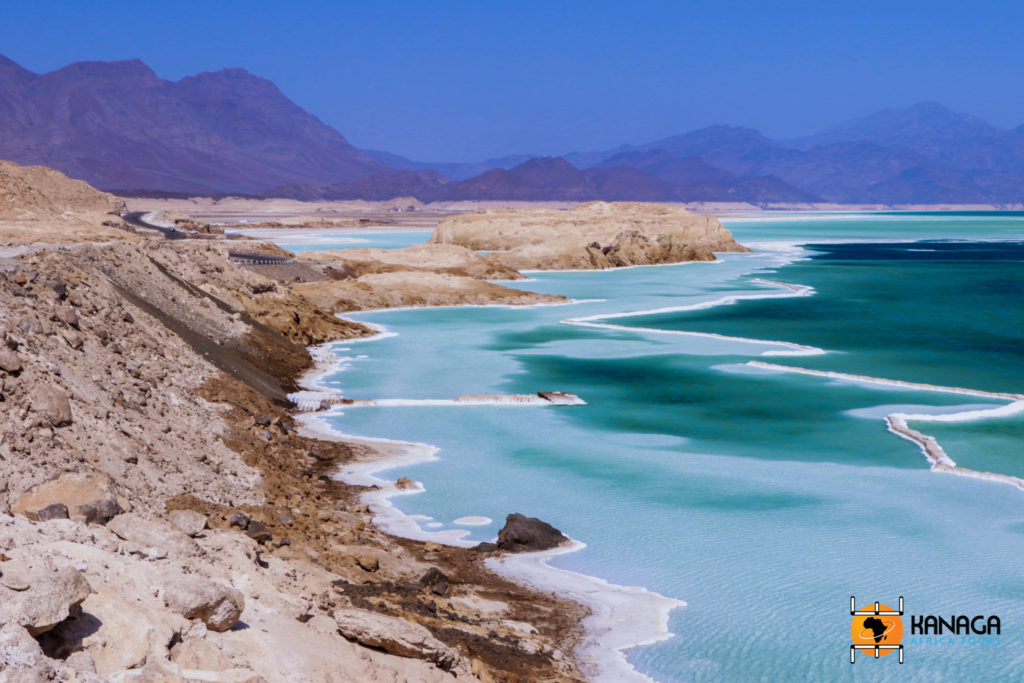Lake Assal is located in the lowest depression in the whole of Africa, at 155 metres below sea level, which is the lowest point in Africa and the third lowest point on Earth after the Sea of Galilee and the Dead Sea.
It is a magical lake, which has the power to change colour depending on the variation of light during the day. The colour range of this salt lake varies from the blinding white of the salt deposits and sodium chloride crystals, to the turquoise and emerald green of the shoreline, to the blue and azure of the deeper waters with their gradual nuances. A true spectacle and naturalistic jewel, with heavenly colours, but kept in the heart of one of the most inhospitable desert regions on earth, surrounded by inactive volcanoes and pitch-black lava sediments.
It is still home to the Afar nomads, the only ones who have adapted to the torrid climates and totally inhospitable environment, and who continue to survive on the extraction and trade of salt, which they transport across the desert in spectacular camel caravans to Ethiopia, and barter for sorghum, charcoal and other goods. Salt was also traded with southern Abyssinia for coffee, ivory, and historically slaves. A source of wealth for local tribes that has been passed down to the present day. In the last two decades, industrial mining has been resumed with the development of roads connected to Ghoubbet El Kharab Bay from the Gulf of Tadjoura. The current road to Lake Assal is paved. Lake Assal is considered the largest salt reserve in the world.







